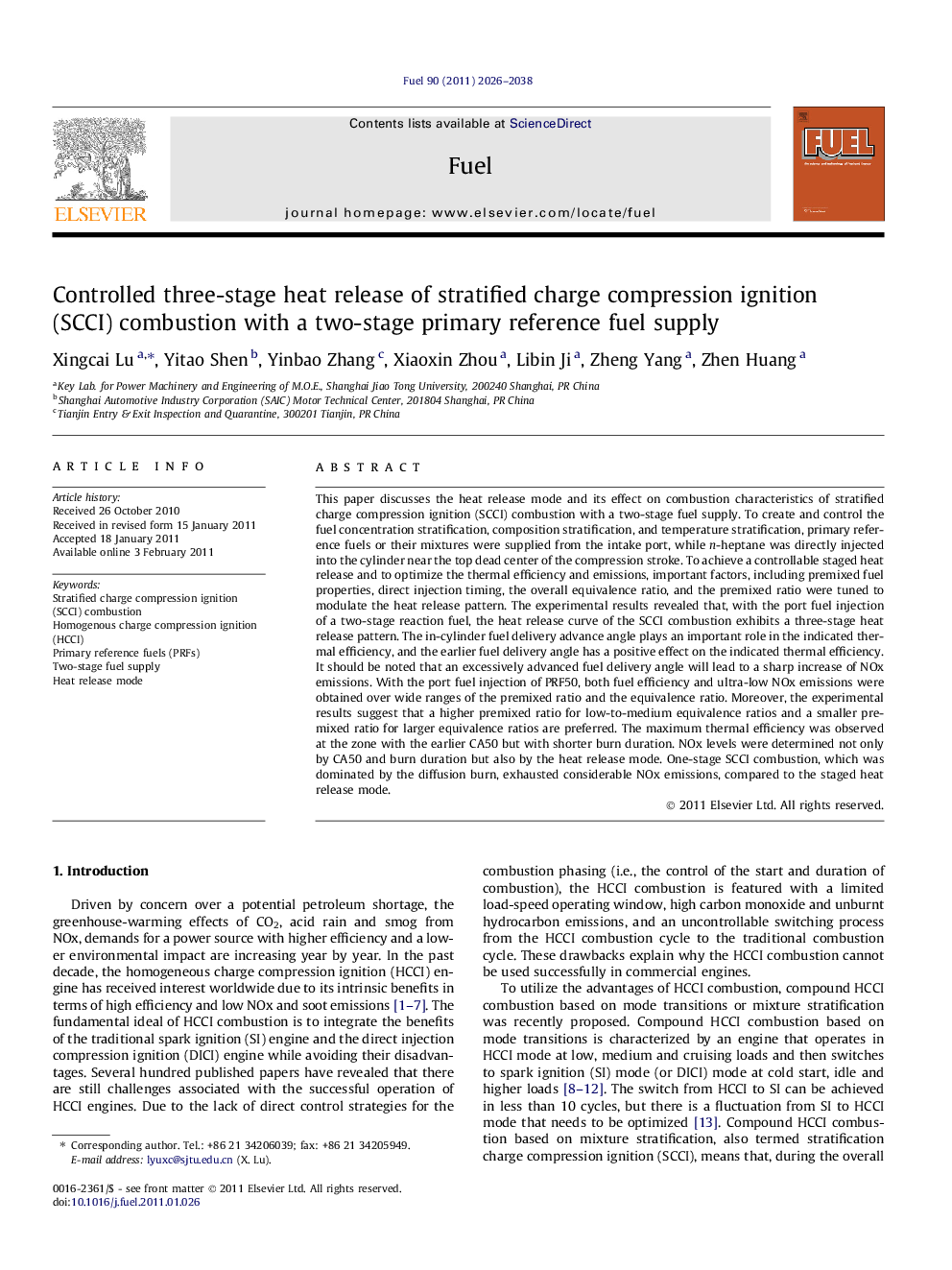| Article ID | Journal | Published Year | Pages | File Type |
|---|---|---|---|---|
| 206777 | Fuel | 2011 | 13 Pages |
This paper discusses the heat release mode and its effect on combustion characteristics of stratified charge compression ignition (SCCI) combustion with a two-stage fuel supply. To create and control the fuel concentration stratification, composition stratification, and temperature stratification, primary reference fuels or their mixtures were supplied from the intake port, while n-heptane was directly injected into the cylinder near the top dead center of the compression stroke. To achieve a controllable staged heat release and to optimize the thermal efficiency and emissions, important factors, including premixed fuel properties, direct injection timing, the overall equivalence ratio, and the premixed ratio were tuned to modulate the heat release pattern. The experimental results revealed that, with the port fuel injection of a two-stage reaction fuel, the heat release curve of the SCCI combustion exhibits a three-stage heat release pattern. The in-cylinder fuel delivery advance angle plays an important role in the indicated thermal efficiency, and the earlier fuel delivery angle has a positive effect on the indicated thermal efficiency. It should be noted that an excessively advanced fuel delivery angle will lead to a sharp increase of NOx emissions. With the port fuel injection of PRF50, both fuel efficiency and ultra-low NOx emissions were obtained over wide ranges of the premixed ratio and the equivalence ratio. Moreover, the experimental results suggest that a higher premixed ratio for low-to-medium equivalence ratios and a smaller premixed ratio for larger equivalence ratios are preferred. The maximum thermal efficiency was observed at the zone with the earlier CA50 but with shorter burn duration. NOx levels were determined not only by CA50 and burn duration but also by the heat release mode. One-stage SCCI combustion, which was dominated by the diffusion burn, exhausted considerable NOx emissions, compared to the staged heat release mode.
